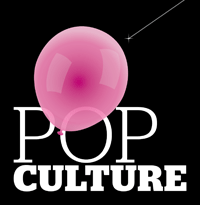
In the earliest days of e-commerce, it didn’t matter if you were ordering from a little old lady on eBay or a venture-funded start-up like Amazon or Webvan: Every transaction was a crapshoot. With a leap of faith, you clicked on the Order button and surrendered your mailing address and credit card number. There was no droning customer-service representative to reassure you that the enterprise you were dealing with was at least legitimate enough to hire a roomful of disaffected high-school dropouts. There was no stamp to lick, nor any other tangible evidence to suggest this transaction was truly taking place. Who knew buying pet food or paper towels could seem so fraught with recklessness? The Internet made the world a more mysterious, magical place.
Today, of course, it’s just the opposite: The chief aim of the Internet is to eliminate mystery from our lives. Now, we know more about strangers than we once knew about friends and loved ones, and unfortunately, we know more about our friends and loved ones, too. In the good old days, they were as inscrutable—and thus as endlessly intriguing—as cats. Now, they relentlessly communicate their current moods, their current geographical coordinates, their current preferences regarding U2’s back catalog.
More
Information on any subject is always at hand. If you are buying organic lip balm that has not been favorably rated by other consumers whose buying histories correspond closely with your own, you are taking unnecessary risks! Google won’t rest, one suspects, until it has added detailed satellite photos of your bedroom closet to its ever-growing map.
But while we may enjoy the detailed Mapquest directions, the thorough Hotels.com reviews, the “most e-mailed” New York Times articles, we still yearn for mystery, too. Or at least the idea of mystery. And that’s why the Something Store exists. For $10, shipping included, this online enterprise will send you something in a plain brown package with a large question mark on it. The package may contain a soccer ball, an hourglass, a waffle-weave robe—but you won’t know exactly what you’re getting until it arrives and you open it up.
The Something Store started in November 2007. In its first month, it sold over 1,000 items. A month ago, following a wave of coverage, the increasing number of orders “delayed shipping times substantially.” Which just goes to show you how starved for a tiny bit of anticipation and surprise people are these days. They won’t pay for the music they use to shape their personas and establish their social networks, but they will blow $10 on a waffle-weave robe.
Even so, however, most people don’t want too much mystery in their lives, and the genius of the Something Store is that it understands this. Indeed, if it truly lived up to its premise, it would make no disclosures about what it sends to its customers. Ordering from it would require a true leap of faith; you could be getting anthrax, lead-filled toys from China, nothing at all. Instead, a feature on the website—the Something Tracker—shows photographs of items it has recently shipped. To further drain the mystery from the process, the Something Store also publishes feedback from customers. (“Order arrived in the time frame given, communication was good. Love my Something!”) By the time you are ready to order, you pretty much know the site is responsible and on the up and up.
At first glance, this approach seems to undermine art in favor of commerce. In fact, it enhances both. After all, what better way to dramatize our diminished interest in—and capacity for—the random and unknown than to offer an ostensible mystery that incorporates predictability and assurance much more than it does mystery? In the Google Age, where everything is mappable, ratable, pre-digested, even chance has become a sure thing.






Previous Discussion: